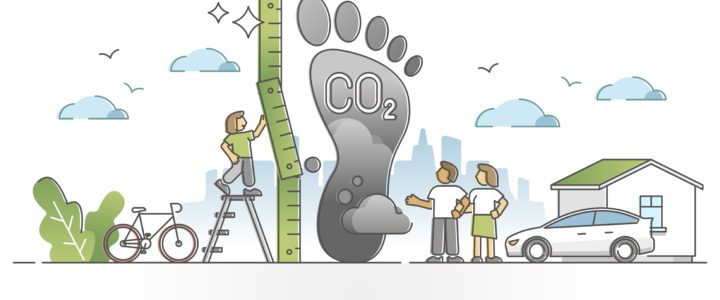
Last week we looked at the key players who are providing information, support, and the science of climate change to make the largest impact on limiting the effects of anthropogenic activities on our planet. This week we look at some of the basic information that everyone should understand in order to transition to a sustainable lifestyle.
As with most global issues, climate change is complex. The science, the causes and consequences, and potential solutions all have a wide range of understanding. So it is no surprise that trying to make sense of how to transition to a more sustainable lifestyle is also very complex.
There are a number of different ways to measure sustainability. It’s the same when someone asks you, “How big is your car?” You could answer in a number of ways: 1,000lbs, 600 cubic feet, 4 door, V8, 6 seater, just to name a few. The same can be said for measuring sustainability.
We could look at the energy used, size of the waste, water consumed, or the emissions produced. But the most common measurement used is the emissions, specifically carbon, that are produced. The number we use is an equivalent—meaning other gas emissions (methane, etc.) are converted into an equivalent carbon amount. And while this has complexities in itself due to the differing lengths of time each gas stays in the atmosphere, we can use this number to accurately compare what impact different goods and services have on our planet.
Life Cycle Assessment
So how do we arrive at a value for the carbon emissions of products and services? We calculate the total emissions for the lifetime of a product or service, better known as a Life Cycle Assessment (or LCA).
“Life cycle” is a relative term when discussing LCAs, and it is important to understand the established boundary conditions of the assessment. The boundary condition encompasses everything that is being assessed. There are several reasons why the boundary condition would change, but generally it refers to the depth of the study by defining the start/end of the life cycle, and outside variables or constants we input into the assessment
Within the boundary conditions the data is obtained from real-time analysis or reliable sources, and the data is used to calculate the emissions. Depending on the depth of the study, the emissions are broken down into different segments to better understand the highest contributors. This also enables us to find the easiest ways to reduce the carbon footprint.
Inputs/outputs of a products lifecycle / US General Services Administration
Putting it into Practice at Home
We can use the same principle in our own lives to live more sustainably.
Our boundary conditions are everything that we can control. For example, if you don’t have access to a renewable energy provider, then keep that outside your boundary and start, instead, by looking at how you use your energy. Or let’s take a look at the need to replace items in your life. Short term items like a toothbrush are replaced fairly easily, but what about a car?
First, if you own an older car, don’t put yourself into debt to upgrade to an electric. Try to use alternative transportation or car pool where possible. But if you do need to make a purchase, let’s take a look at the best selling sedan of 2016, the Toyota Camry, and debate whether we should upgrade to an electric vehicle. The average miles of US drivers last year was 8,600 (a pandemic drop of 20%) which would equate to 15,738 lbs of CO2 emissions. Upgrading to the number one electric vehicle, the Tesla model 3, has emissions of 3,440 lbs of CO2 for the same distance. But we can’t forget the emissions from manufacture and delivery of your brand new shiny car, that would be an average in the US of 63,300lbs of CO2 divided by the lifetime of the car (current lifetime estimated at 8 years based on the expected battery life).
Overall, the Tesla is 20% more efficient but could you have reduced your emissions by car pooling, taking alternative transport, or walking to make up the difference?

What about switching to renewable energy? If your current provider can supply you with cleaner energy at similar costs it makes sense. The range of renewable energy emissions are currently <1% to 10% of the emissions from fossil fuel sources. That’s a big difference. But if renewable sources are unavailable and you are unable to install your own renewable energy system, there are other ways to be mindful of emissions.
Most of the energy used in your house comes from heating and cooling. The water heater emissions can be mitigated by taking shorter showers, washing clothes on a cold cycle, and ensuring dishwashers are full before use. In the kitchen, electrical appliances are more efficient than traditional gas burners and ovens, you can increase the efficiency of fridges and freezers by keeping them as full as possible, and defrosting frozen food in the fridge.
Paying better attention to your diet is not only good for the waistline but can be good for the planet. The general rules are plant based diets < meat diets, local < imported and less waste < more waste.
Remember that it’s going to take some practice to become good at living sustainably. It’s a skill. So don’t be afraid to use some training wheels on your journey such as carbon offsetting. But remember that carbon offsetting is not a solution, merely a stopgap to reaching your sustainability goals.
Next week we look at one of the scenarios of a future with an anthropogenically-changed climate—a very bleak future of our worst case scenario.
Part VII of our Climate Change Series that looks at climate history, consequences, policy and future outlook.



